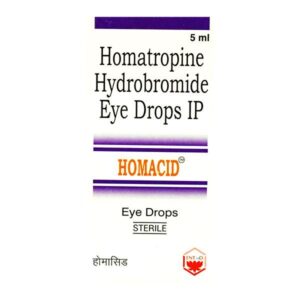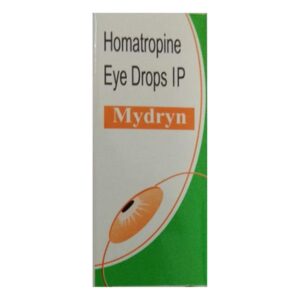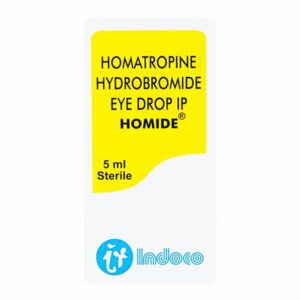HOMATROPINE HYDROBROMIDE
HOMATROPINE HYDROBROMIDE: Homatropine hydrobromide is a medication that belongs to the anticholinergic drug class. It is commonly used as a mydriatic (pupil-dilating) agent and cycloplegic (paralyzes the ciliary muscle of the eye) for diagnostic and therapeutic purposes in ophthalmology.
The mechanism of action of homatropine hydrobromide involves the blockade of muscarinic acetylcholine receptors in the eye. By inhibiting the muscarinic receptors, homatropine prevents the effects of acetylcholine, leading to dilation of the pupil and the paralysis of the ciliary muscle. This allows for a better examination of the eye and helps to relieve pain associated with certain eye conditions.
Homatropine hydrobromide is typically administered as eye drops or ointment. The usual dose for adults and children is 1 or 2 drops of a 2% solution into the affected eye(s), repeated every 3 to 4 hours, as needed. For cycloplegic refraction, a stronger concentration of up to 5% homatropine may be used.
This medication may cause some side effects, which include blurry vision, sensitivity to light, stinging or burning of the eyes, dry mouth, dizziness, and headache. These side effects are usually mild and transient. However, in some cases, more serious adverse reactions such as allergic reactions (swelling, rash, itching), increased heart rate, confusion, or hallucinations may occur. It is important to seek medical attention if any severe or persistent side effects occur.
Homatropine hydrobromide should be used with caution in patients with certain medical conditions such as narrow-angle glaucoma, asthma, or urinary retention. It is not recommended for use in children under 2 years old due to an increased risk of systemic effects.
It is important to follow the prescribed dose and duration of treatment recommended by your healthcare provider, as misuse or excessive use of homatropine hydrobromide can lead to serious eye complications or systemic effects.



